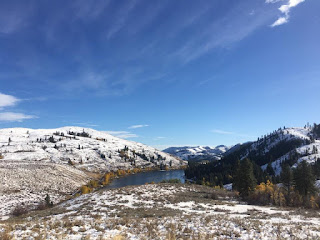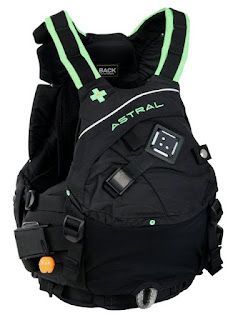When Is The Wind Too Strong For Kayaking
This is a good question and I bring this up because I see a good amount of people find there way to my blog by searching for that exact phrase.
My first answer for you is it really depends on your individual skill level. Some kayakers who may be slightly more advanced with bracing and kayak handling skills might be able to kayak in conditions that far worse than a kayaker without those skills.
So knowing your personal limits is key. Defining those limits should be done in time. By honing your skills and taking classes (BCU or ACA). Slowly build your confidence by attending a class in conditions that challenge you and with the safety of an instructor open yourself up for learning.
Next you have to take in account the region you are kayaking. If you are in a place with little to no tidal exchange then currents are not that big of a factor. But in areas where you have large exchanges between high and low tide. Well current is a huge factor then.
Example: If you have a tide that runs South for outgoing tide (ebb) and North for incoming tide (flood). So you check your forecast before going to the beach and they area calling for winds South 14kts. The time you are going to be on the water is an ebb tide. You consult you tide chart and see it is a 10ft ebb. So now you have wind going the opposite direction of the water. In this case you will start to see wind waves develop on the surface. Maybe some whitecaps. The conditions get sloppy.
Now lets say the wind is forecast as North 14kts with the same ebb tide. Now you have winds out of the North with a tide heading South. So the winds and tides are moving the same direction. You not see as much wind chop and the conditions do not look as bad as the above example.
So my point. Wind is only a piece of the puzzle when making judgment calls on water conditions.
There is a good tool that gives you visual ques to use when on the water. It is know as the Beaufort Scale.
This link http://www.spc.noaa.gov/faq/tornado/beaufort.html is good because it has everything spelled out for on water and land observations.
This link is more fun http://www.howtoons.com/toon/the-beaufort-scale/ . I like it as it seems to give you a visual of concept.
As sea kayaker talking to another sea kayaker we typically explain wind conditions in terms of the Beaufort Scale. This way we both have an understanding on what the water conditions look like.
Working as a kayak guide I am always checking the wind. Force 1 through 3 winds are comfortable days for guiding. The water conditions are usually nice within that range. As you move to Force 4 you really need to start accounting for tidal effect combined with the wind. Force 5 we do not want guides on the water with clients at this point. Things can get out of control with a novice group in these conditions.
For some of my personal kayak trips with experienced friends. We push things up to Force 8. Doing this require that you have a good working relationship with your partners and their skills. You never really want to be out there alone and being with someone who does not have the experience is the same as being alone.
I know that there is no direct answer on how much is too much. My opinion is if you are asking this question, then you are new to kayak or has minimum skill set to work with. If this is the case Force 1 through 3 are good starting limits. But never go out alone.
Here are a few links to education in my region:
Discovery Sea Kayaks on San Juan Island Wa
Body Boat Blade on Orcas Island Wa
Sea Kayak Shop Anacortes Wa
Columbia River Kayaking Southern Washington
Alder Creek Portland Or
Here there is lots of current mixed with a stiff wind.
Coastal Oregon on an windy day. BIG SEAS!
Playing in a nice breeze with some chop. Notice I am with someone else. Make sure you are out with a partner you have confidence in.
Hope that helped.






Comments